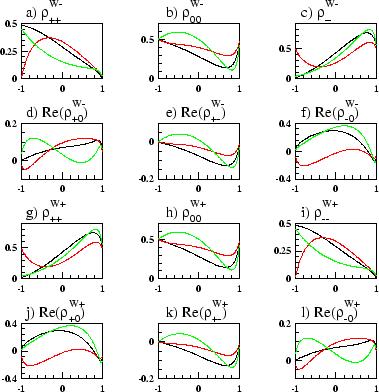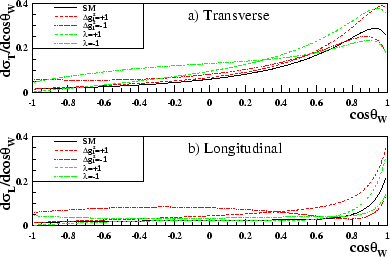If only one of the W bosons in the W-pair is considered then the differential
cross-section can then be written in
terms of the single W Spin Density Matrix (SDM) [36,41]. For example, if only the
![]() boson is considered,
boson is considered,
Equation 3.35 is known as the 3-fold differential cross-section. The single W SDM completely describes the polarisation properties of one of the W bosons when the helicity of the other W boson has been effectively summed over. So the single W SDM is related to the two-particle joint density matrix as follows,
 |
(3.36) |
Like the two-particle joint SDM, the single W SDM has purely real diagonal
elements and complex off-diagonal elements. The single W SDM contains nine
elements, the diagonal elements of which are the probability of producing a W
boson of helicity ![]() , and so are normalised to unity,
, and so are normalised to unity,
 |
(3.37) |
Examples of some of the real parts of the single W SDM elements can be seen
in figure 3.11. The individual W polarised cross-sections, which
are the differential cross-sections for producing a transversely (T) or
longitudinally (L) W boson in the pair, where the other W boson can take any
polarisation,
can be written in terms of the single W SDMs. So for the polarisation of
the
![]() we have,
we have,
 |
Examples of the individual W polarised cross-sections can be seen in figure 3.12. Shown, are the cross-sections for the Standard Model as well as those with various anomalous couplings implemented.
 |